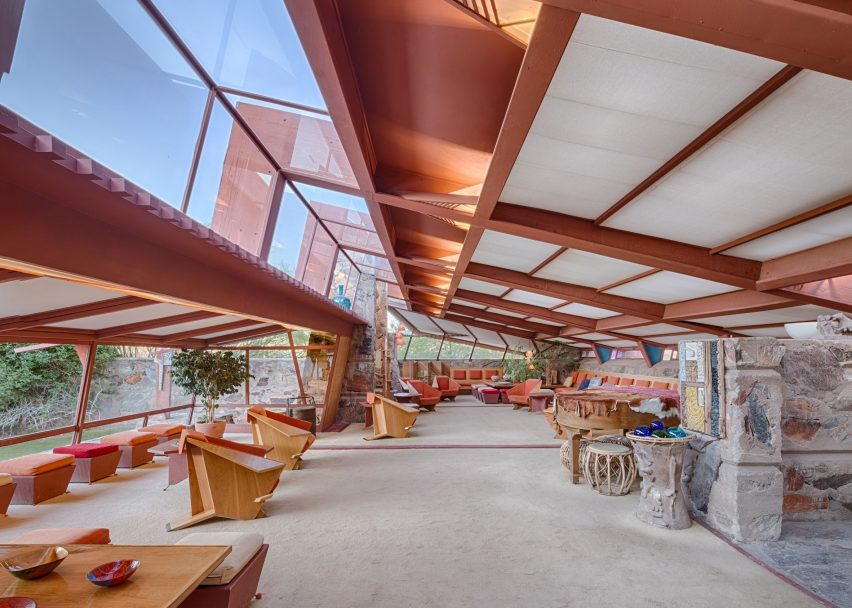Graduate Fellows at the Winterthur/University of Delaware Program in Art Conservation (WUDPAC) are permitted 20 research days during their third year internship. These “research days” are designed to allow the student opportunities for professional development and research. Melissa utilized her research days in the following ways:
VoCA Artist Interview Workshop

On October 22-23rd 2019, Melissa participated in the Voices of Contemporary Art (VoCA) Artist Interview Workshop hosted at the Glenstone Museum. The workshop brought together conservators, curators, filmmakers, and artist foundation members to discuss the art of interviewing. There were several guest speakers who provided case studies of interviews and their own anecdotes and lessons learned from the process. Participants learned about the interview process from an oral historian, who explained ways to adapt the ethics and techniques developed in that field. They also heard from a lawyer who went into the details of intellectual property and other considerations.

Getty Conservation Institute: Tools for Temperature and Humidity Analysis in Collection Care
On December 3-4 2019, Melissa traveled to the Winterthur Museum to attend a Getty-funded meeting to discuss existing and developing tools for environmental data visualization. Melissa was invited because of a tool that she helped to create with Dr. Rebecca Napolitano, a civil engineering PhD candidate at Princeton (the two met during the Building Diagnostics course at UPenn). Each participant presented their respective tools and then the group discussed the advantages and disadvantages of them in hope to define ideal characteristics for future tools. In the end, the group decided on writing a position paper through the GCI Internal Publications (forthcoming in 2020).
NEH Sustaining Cultural Heritage Grant: Taliesin West
Prior to the COVID-19 pandemic, Melissa had planned to join preventive conservator Wendy Jessup, and Architect/Mechanical engineer Michael C. Henry on a trip to Taliesin West in Scottsdale Arizona (April 2020). Wendy and Michael were hired to consult on the development of a Collections Storage Improvements Plan following their 2018 FAIC Collections Assessment for Preservation (CAP) program. The consulting for the Frank Lloyd Wright Foundation (FLWF) was funded through the Sustaining Cultural Heritage Collections (SCHC) grant from the National Endowment for the Humanities (NEH).

Taliesin West is a National Historic Site and was Frank Lloyd Wright’s winter home from 1937 until his death in 1959. Collections at this museum include: furniture and textiles designed by Wright; Japanese woodblock prints; Asian screen paintings and hanging scrolls; Native American pottery and baskets; books; musical instruments; clothing; archival collections, and more.
In the 2018 CAP survey, it was deemed a high priority to consolidate collection items into two existing secure low-risk buildings. The objects that are not already stored in these locations have a high level of risk for damage from widely fluctuating temperature and relative humidity, pests, smoke, fire, and flooding. In order to achieve this goal, Wendy and Michael recommended that space should be created in the two low-risk buildings by the removal of non-critical non-collection items. There are also suggested upgrades to these buildings that would improve sustainability through building envelope improvement. Additionally, the space can be used more effectively with space-efficient storage furniture. By having the collection safely consolidated, staff and researchers can expect to have greater ease of access with increased safety and security of the collection items.
Unfortunately, the trip was cancelled due to fears of traveling during the pandemic, and efforts have been made to move this work to an online format. Melissa is limitedly participating in this work by attending some of the online meetings. During these video conferences, Wendy will work to assess the collections storage equipment, take basic measurements and collect information about collections spatial requirements. Michael will be assessing the buildings to consider potential environmental improvements. The work will culminate with the implementation of a collaborative and participatory workshop to establish objectives for safe and sustainable collections storage.